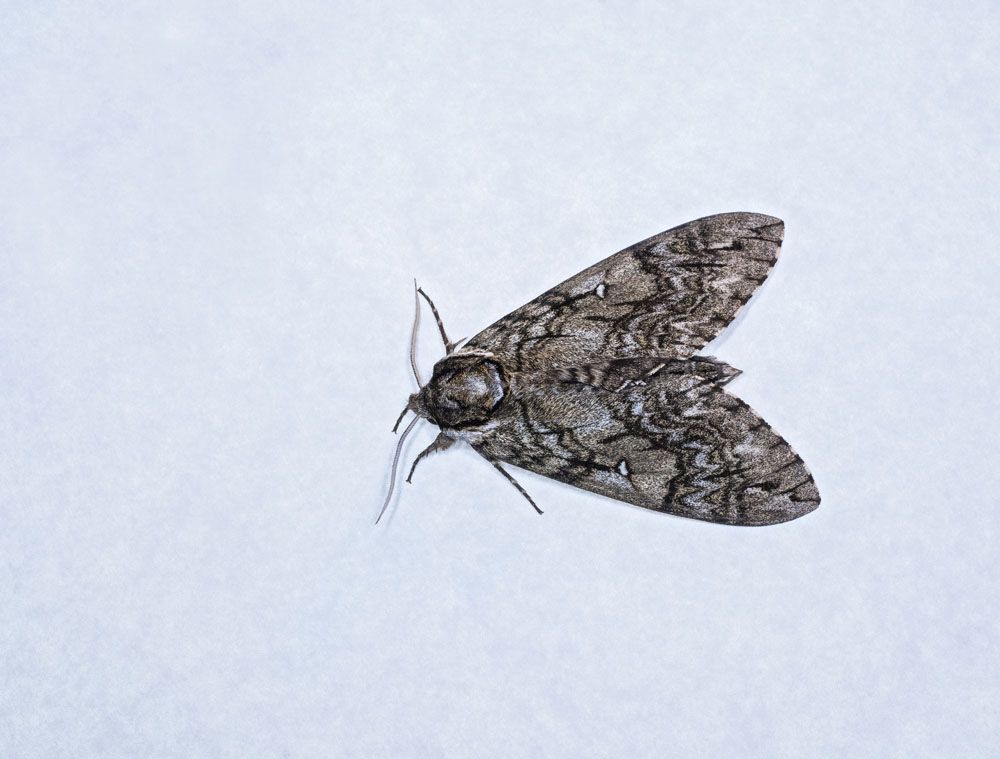
Waved Sphinx – Ceratomia undulosa
Waved Sphinx – Ceratomia Undulosa
Scientific Name: Ceratomia Undulosa
Common Name: Waved Sphinx
Distribution: East of the Rockies in North America, the Waved Sphinx Moth’s range extends to Florida and Nova Scotia, west to Texas and Colorado, north to Alberta, and has also been observed in Oregon and Montana.
Host plants: Ash (Fraxinus), privet (Ligustrum), oak (Quercus), hawthorn (Crataegus) and fringe tree (Chionanthus virginicus).
Identification: The forewing of the Waved Sphinx Moth (Ceratomia Undulosa) varies in color from pale gray to yellowish-brown, featuring many black wavy lines that traverse the whole wing and a prominent white reniform patch. A significant characteristic is the absence of black basal dash on the forewing. The hindwing has a checkered fringe of white and dark and is brownish-gray in color. Three darker lines span the wing. There is a 76 to 110 mm wing span.
The larvae have seven pairs of oblique lateral stripes on their generally greenish, occasionally reddish bodies. The white granulose spotting is absent at the lower end of the stripes, which only reach the intersegmental region. The head features a pinkish horn and a band that runs from the eyes to the crown in either pink or yellow. Above, the anal plate is convex. There is noticeable black spotting on the anal prolegs and anal plate.
Life Cycle: Both genders become visible. In the south, the adults fly from May to October, while in the north, from June to August. In Louisiana, there are up to six peak flight seasons, which start in early April and recur every thirty days or so. Pupae undergo subterranean pupation and hibernate over the winter. In the south, the larvae are present from April to October; in the north, they are present from June to October. The Waved Sphinx Moth has a single brood in the northern parts of its territory and frequently has two or more in the southern parts. Medium-sized, light green eggs need roughly eight days to incubate.
Damage: Larvae feed mostly on the leaves of ash (Fraxinus spp.), particularly Green Ash (F. pennsylvanica) in Canada. However, they also consume other woody plants such as privet (Ligustrum), fringetree (Chionanthus spp.), hawthorn (Crataegus), lilac (Syringa), and oak (Quercus). Most likely, adults don’t eat.
Management: None reported.
